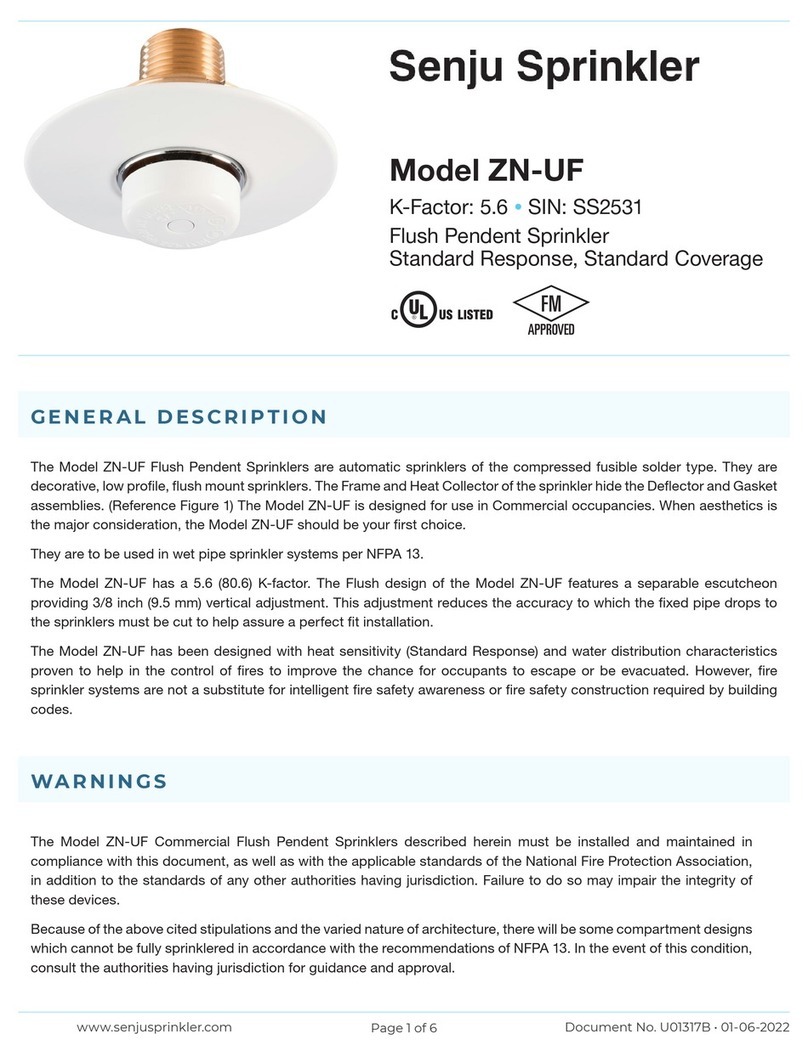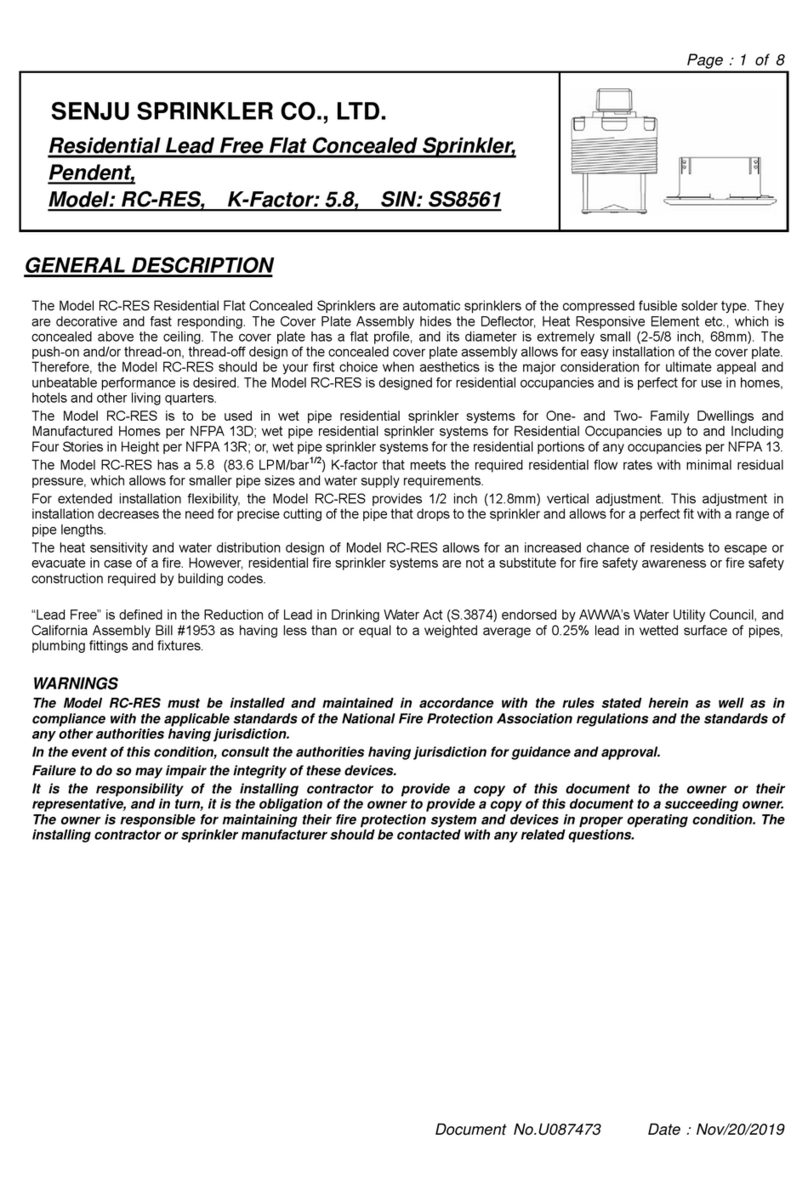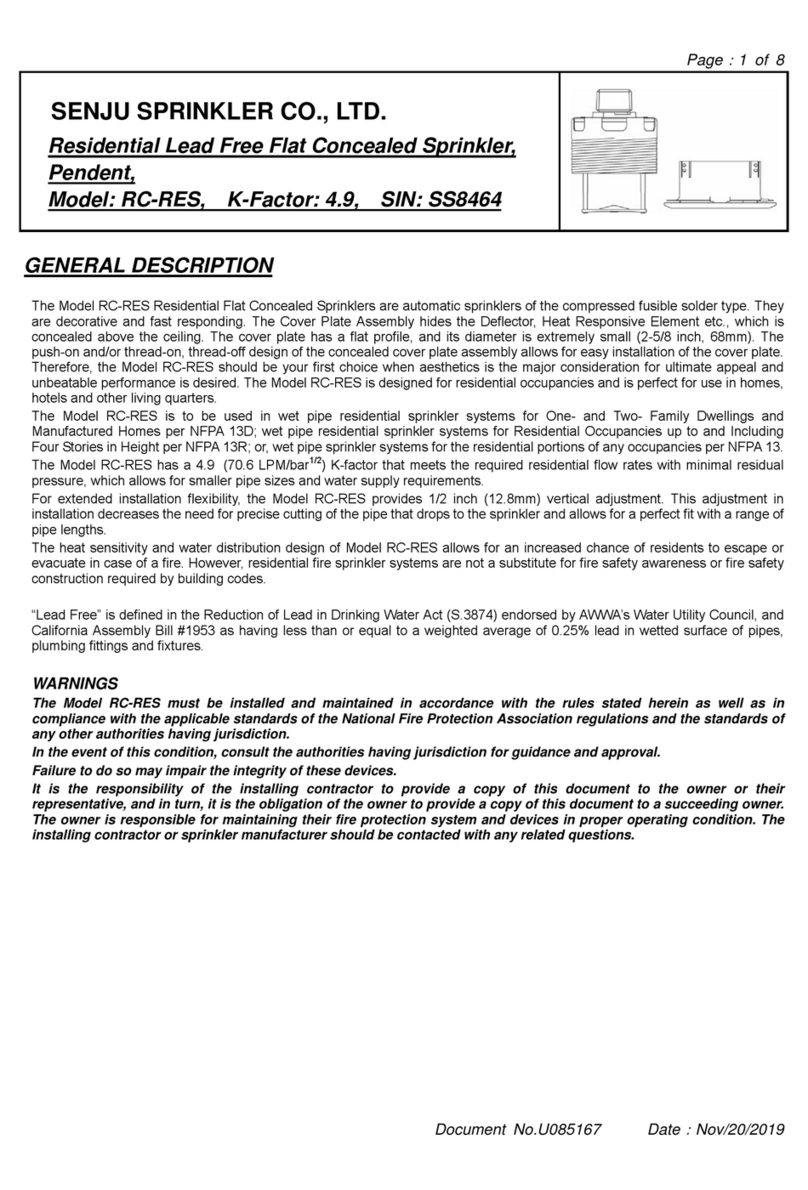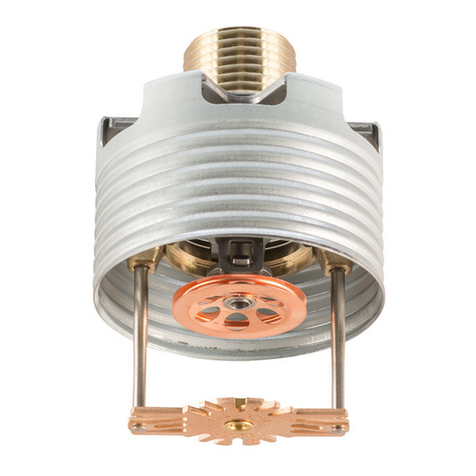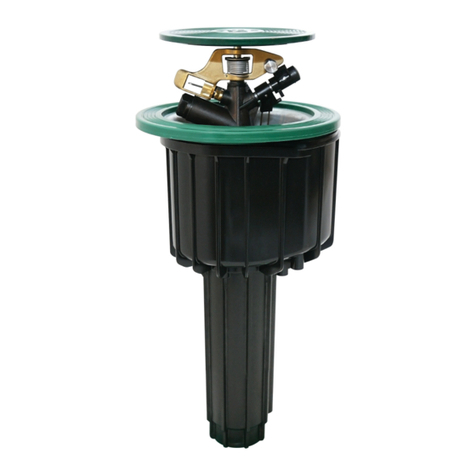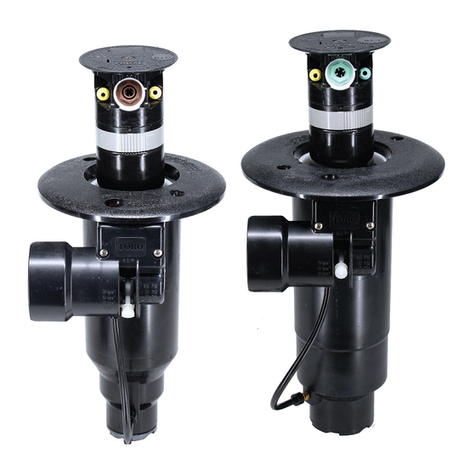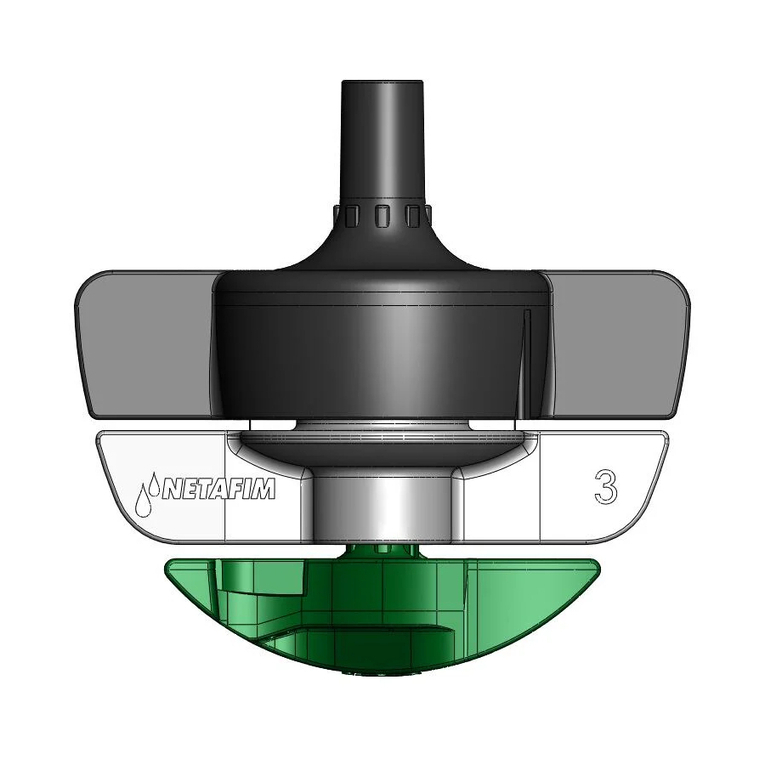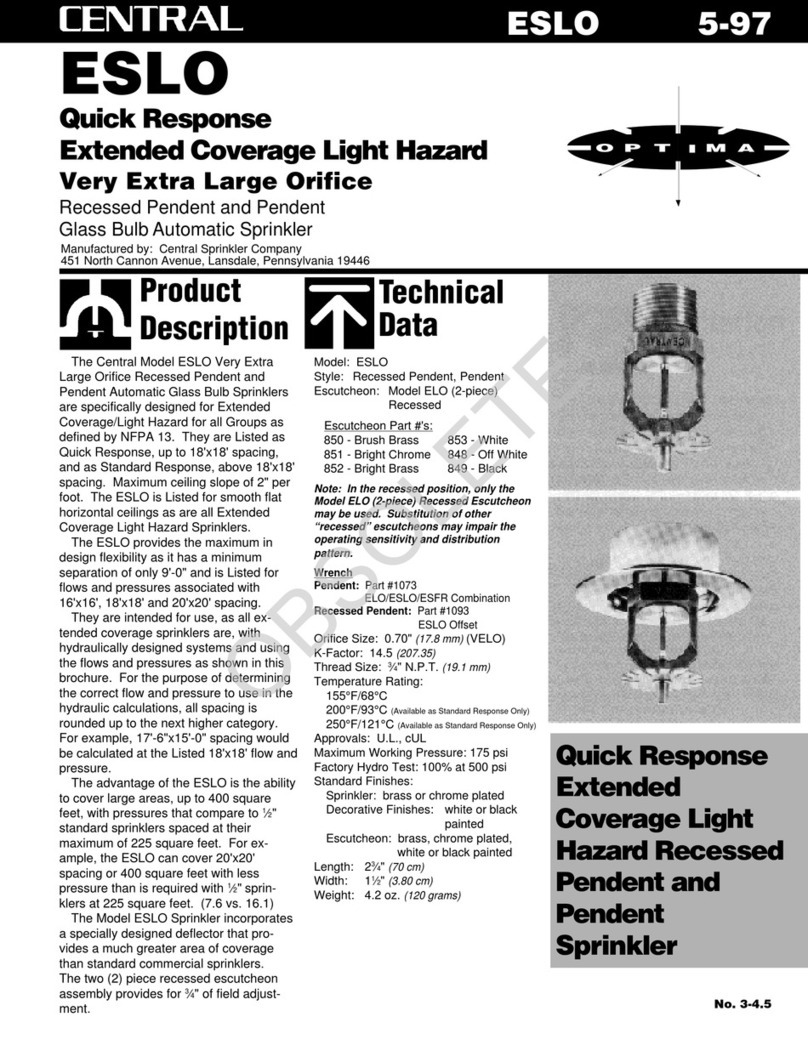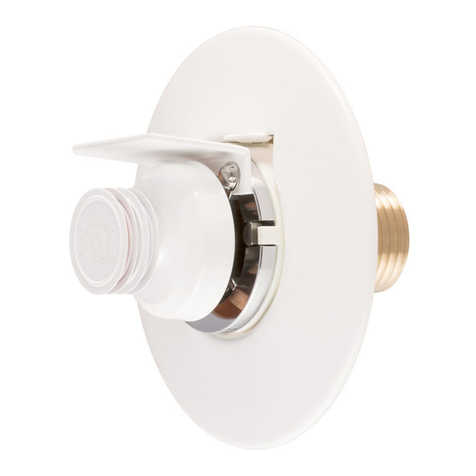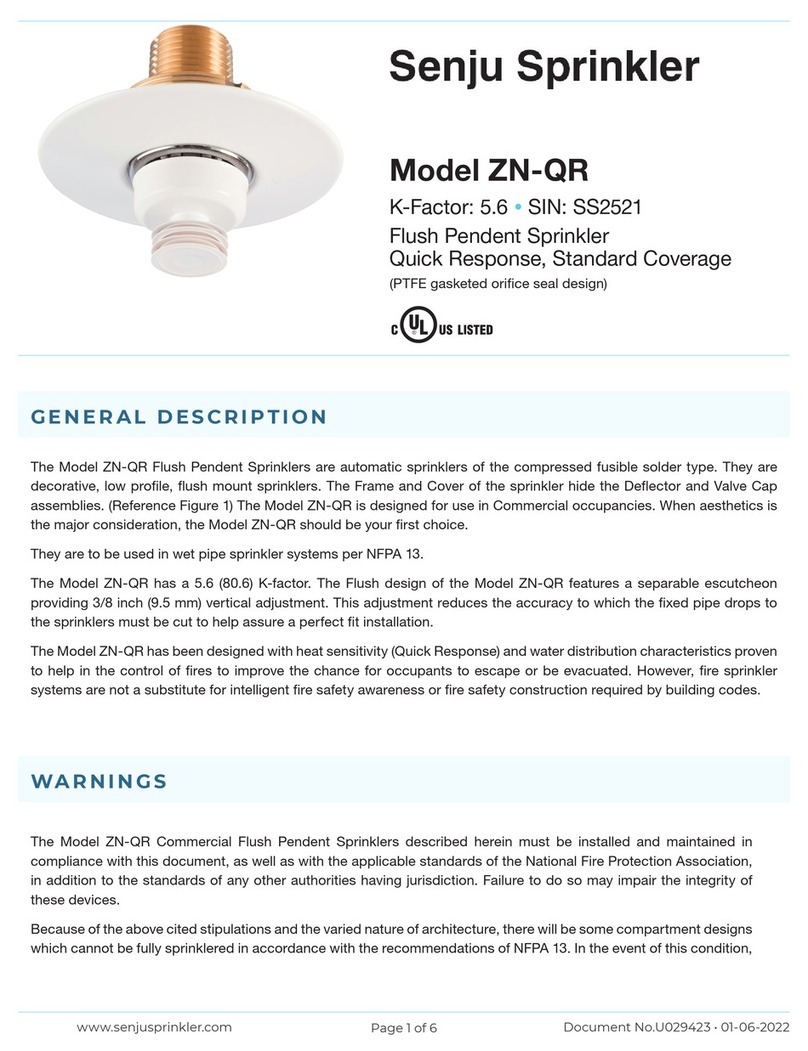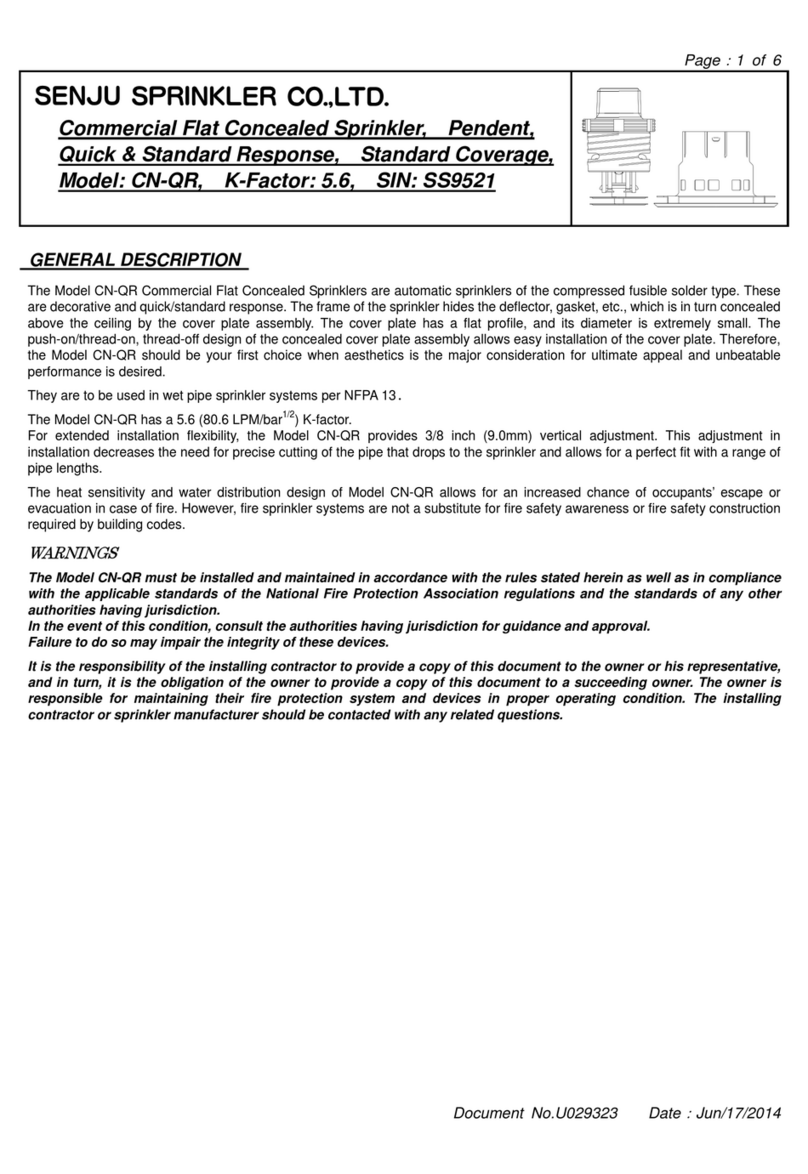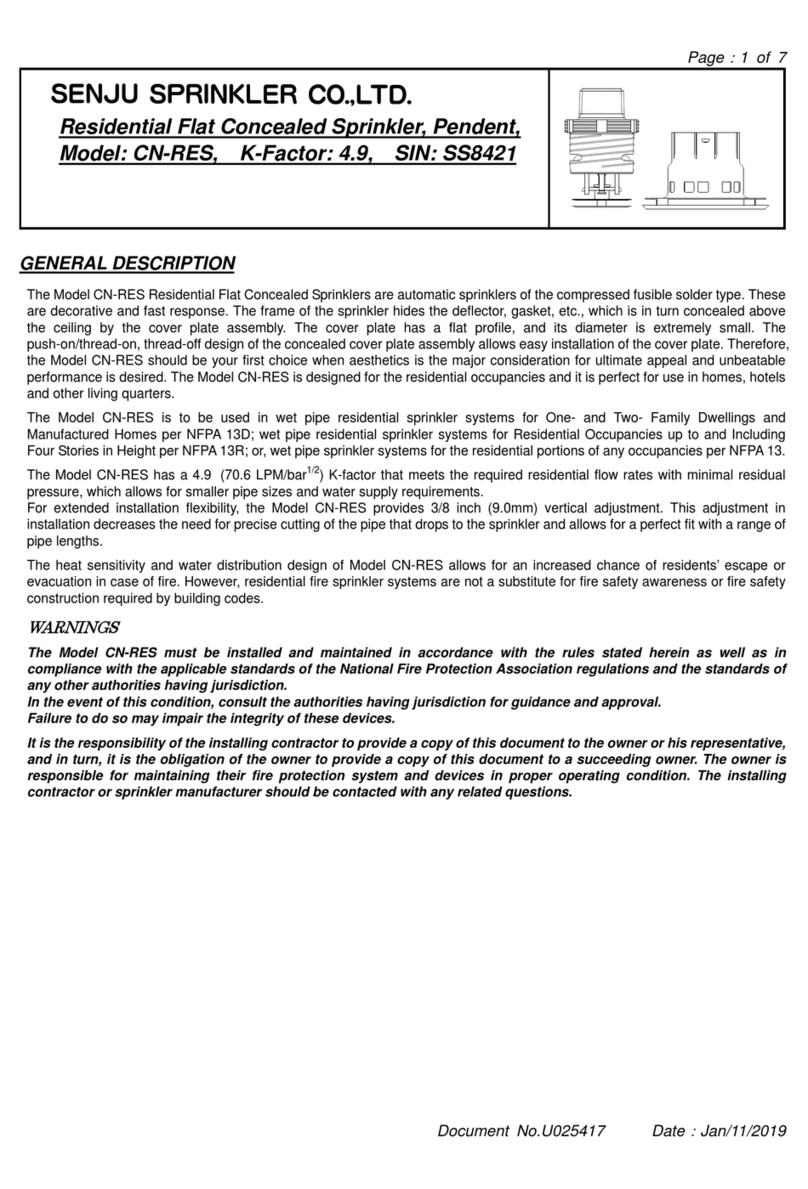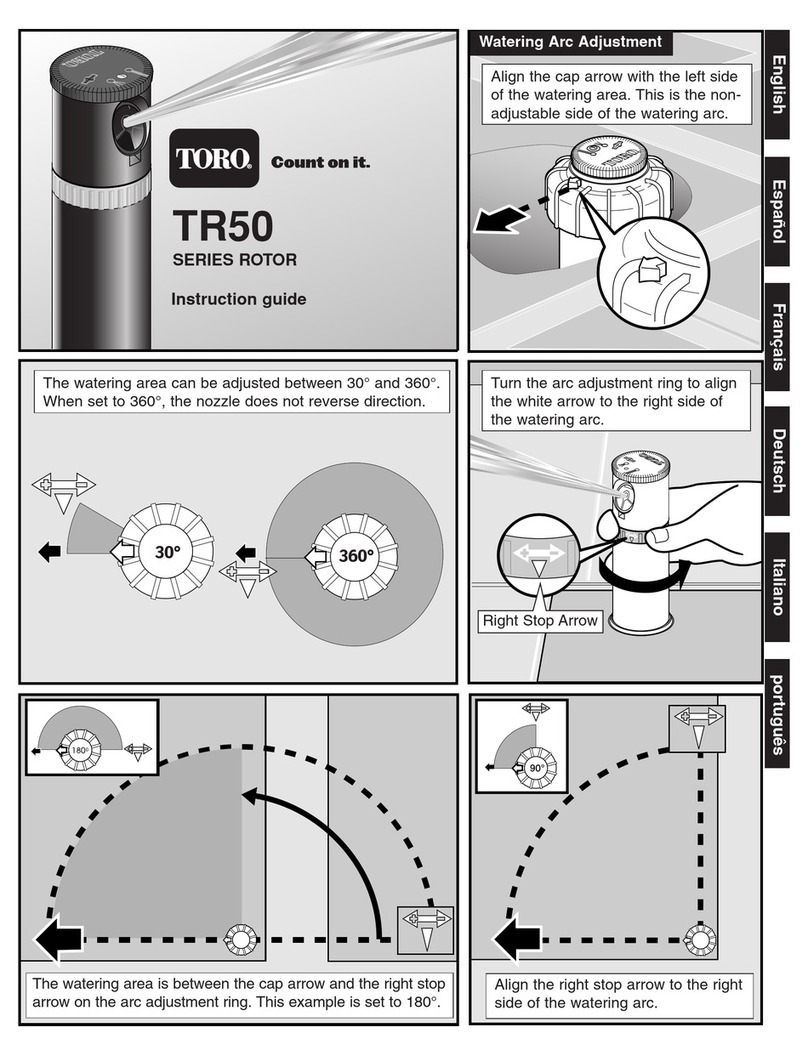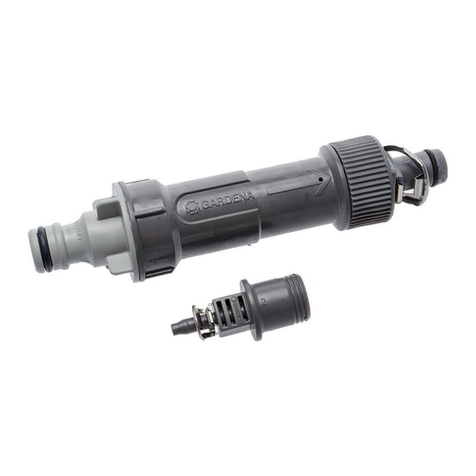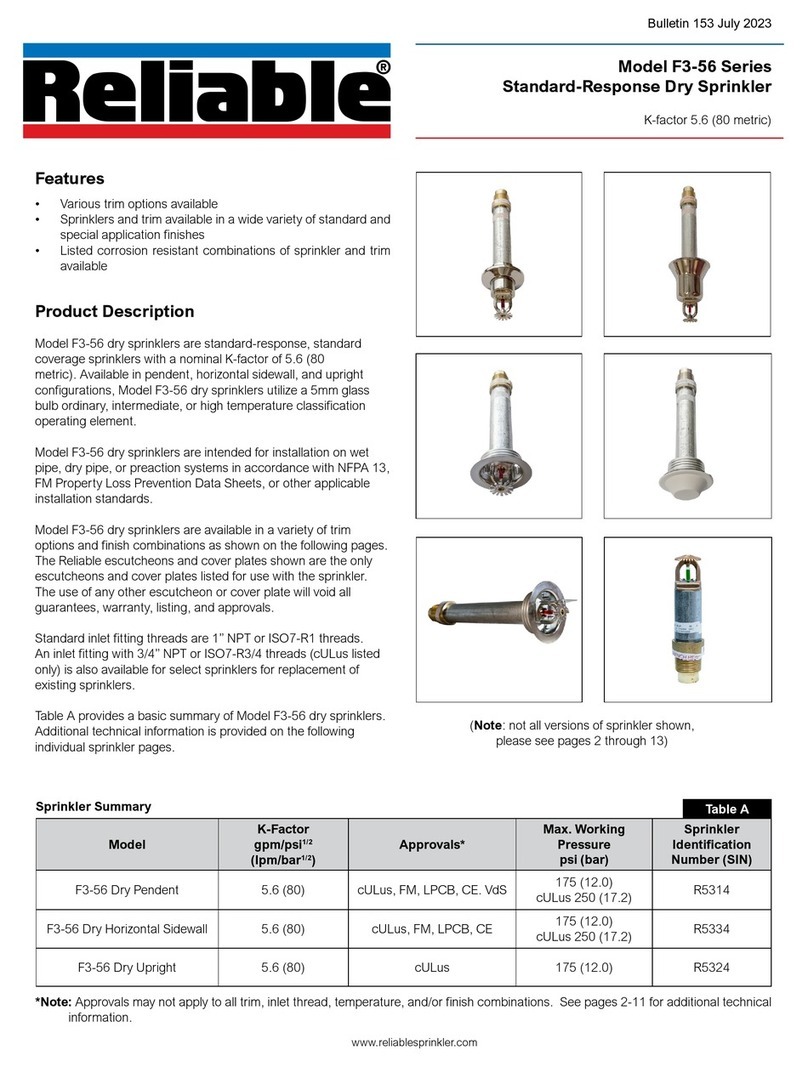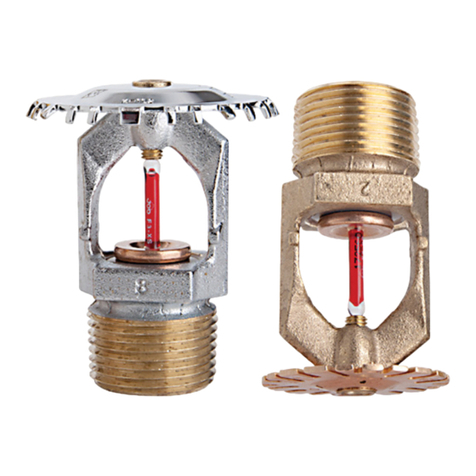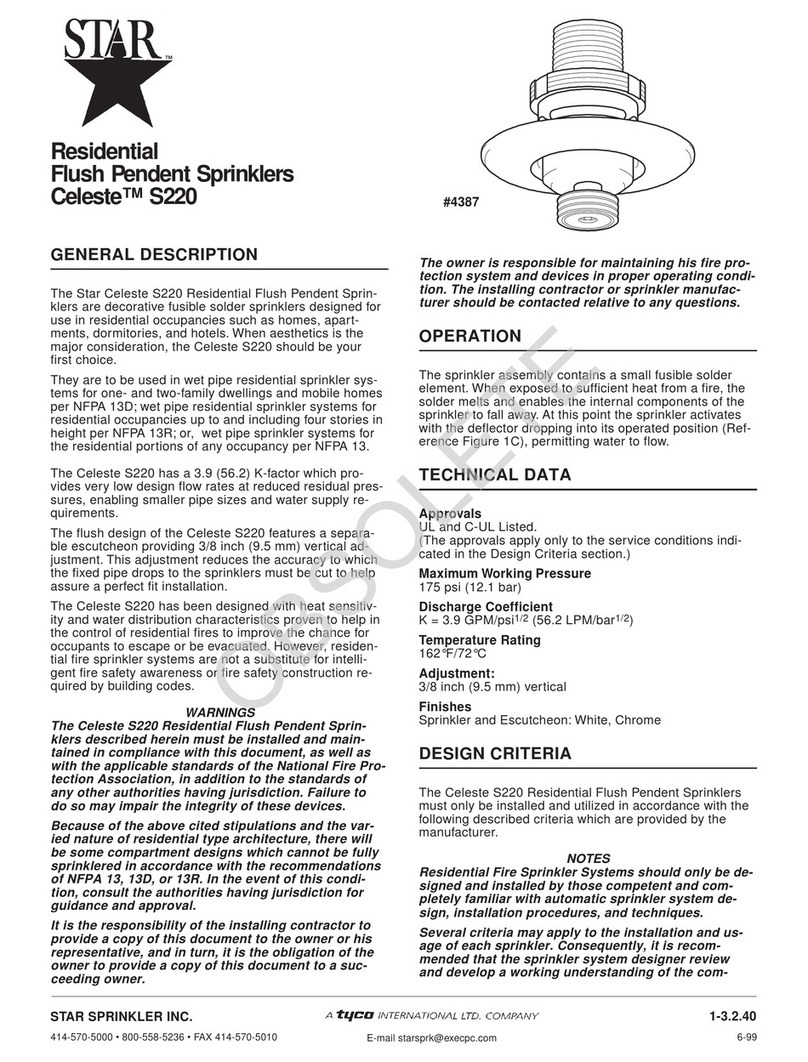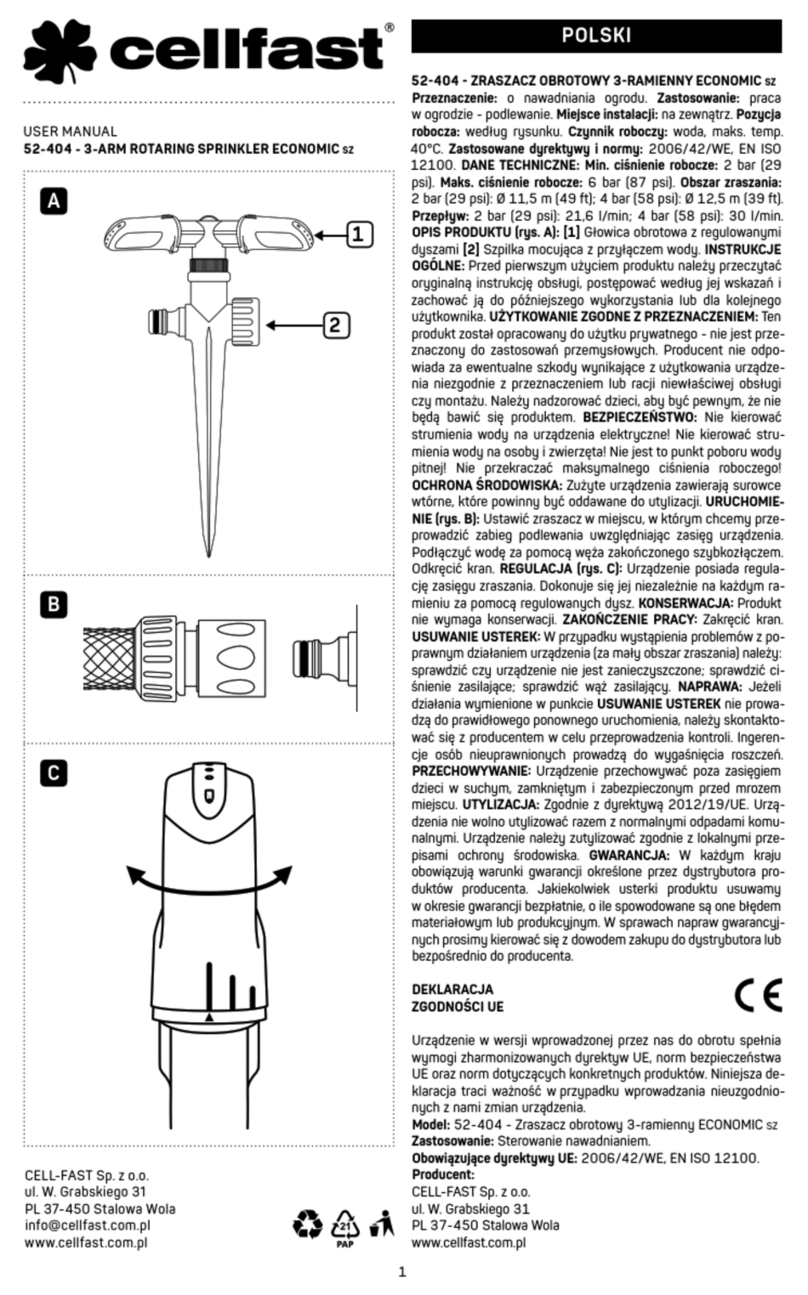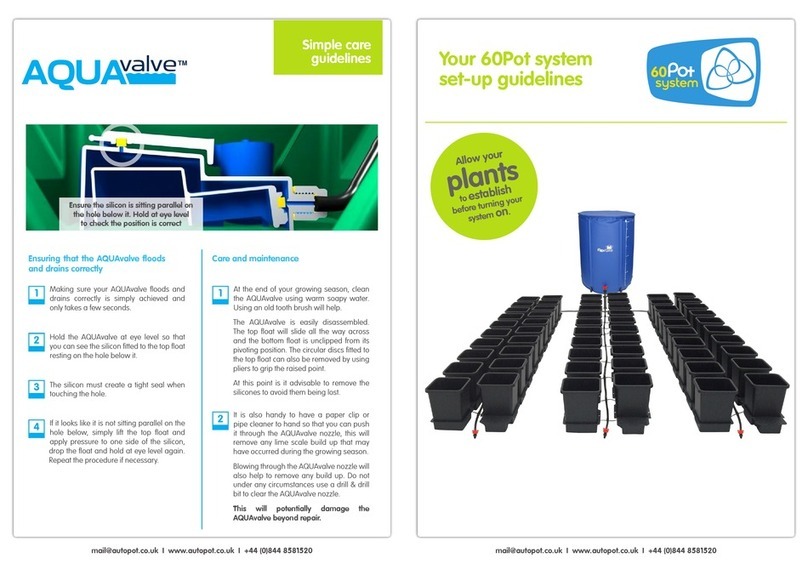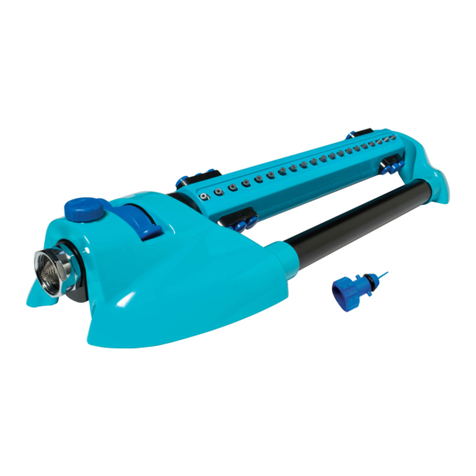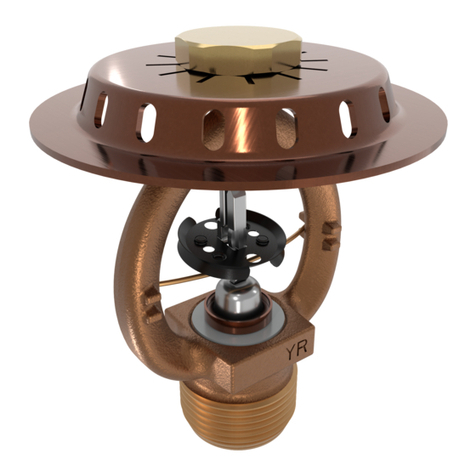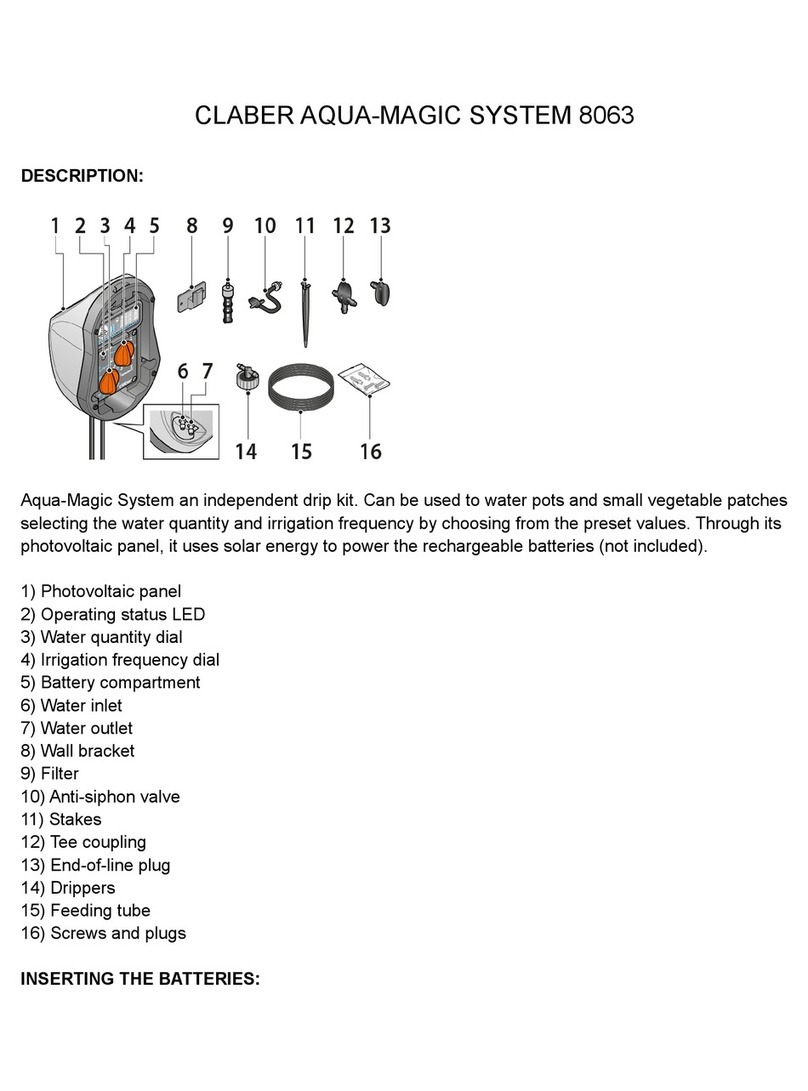
Page
:
3 of 8
Document No.U087143
Date
:
Oct/18/2019
DESIGN CRITERIA
The herein stated rules for use and installation of Model FR-RES are provided by the manufacturer and must be strictly
implemented for safe and full results. Only the D1 or D3 Recessed Escutcheon, as applicable, is to be used for recessed
pendent installations. D1 Recessed Escutcheons are not listed for use with the 205°F heads. D3 Recessed Escutcheons are
required for the 205°F heads.
NOTES
Residential Fire Sprinkler Systems should only be designed and installed by individuals who are completely familiar
with automatic sprinkler system design, installation procedures, and techniques.
Several criteria may apply to the installation and usage of each sprinkler. Consequently, it is recommended that the
sprinkler system designer review and develop a working understanding of the complete list of criteria prior to
initiating the design of the sprinkler system.
Questions concerning sprinkler installation and usage criteria, which are not covered by the following instructions,
should be submitted to your contracted company. Include sketches and technical details, as appropriate.
In some instances, the requirements of this document may concern specifications which are more stringent, and
which take precedence over those specified in NFPA 13, 13D, 13R or by the authority having jurisdiction.
The spray from the sprinkler is distributed radially outward and downward from the sprinkler deflector. Consequently,
the sprinklers must be located such that there will be no blind spaces shielded from spray by partitions, room dividers,
overhangs or other parts of the dwelling structure.
The number of sprinklers within each compartment (as defined by NFPA 13, 13D or 13R) must be kept as few as
possible. Do NOT use more sprinklers than necessary to cover a particular space.
The sprinkler must be secured in place by firmly fastening the sprinkler system piping to the structure. If the sprinkler
is not properly secured in position, reaction forces resulting from sprinkler operation could alter its orientation and its
water distribution pattern.
Obstruction to Water Distribution
Locations of sprinklers must follow the obstruction rules of NFPA 13, 13D and 13R for Residential Sprinklers.
General Service Conditions
The Model FR-RES must only be utilized in WET PIPE sprinkler systems.
Heat Source Criteria
Refer to NFPA 13D, 13R or 13 for the requirements relating to the prevention of possible activation of the Heat Responsive
Element of Model FR-RES, due to the exposure of a heat source other than an actual fire.
Available Sprinkler Temperature Ratings
Sprinkler Temperature Classification Sprinkler Nominal Temperature Rating
Maximum Ambient Ceiling Temperature
Ordinary 162°F (72°C) 100°F (38°C)
Intermediate 175°F (79°C)
205°F (96°C) 150°F (66°C)
Precautionary Warnings for Corrosive Environments
Model FR-RES sprinklers should not be installed where they may be subjected to a corrosive environment including the
following:
(1) Chlorine ion and Chloride environment.
Stress corrosion cracking may be caused by exposure to environments with Chlorine ion and Chloride. Exposure to this
environment may result in sprinklers operating under Non-Fire conditions or Not Operating when exposed to an actual fire.
(2) Sprinkler system piping with Copper.
Sprinkler systems should be constructed in compliance with the applicable standards and the requirements for copper piping
when copper piping is used in the sprinkler system. (Reference standards NFPA 13, ASTM B813, B828, and CDA (Copper
Development Association) – Solder Joint)
All residual flux must be removed from the interior and exterior of the copper piping by thoroughly flushing before installation
of the Sprinkler Heads. Otherwise, residues of flux may cause corrosion and leakage in the sprinkler system.








